#Shijūshichishi
Explore tagged Tumblr posts
Photo
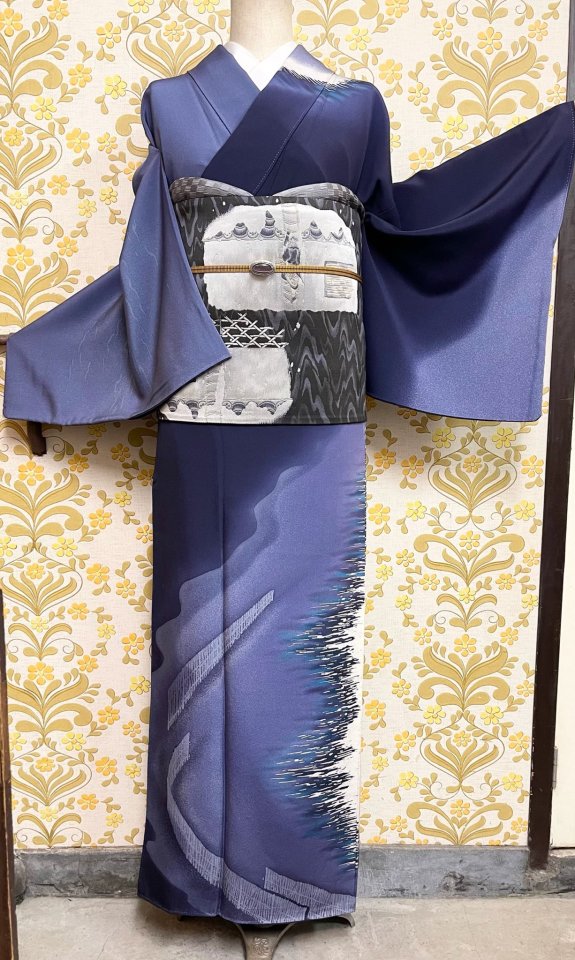
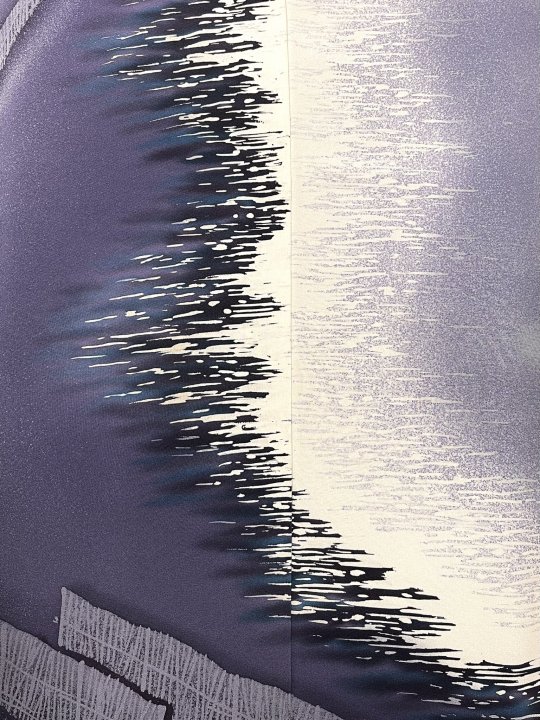


Refined colors for this muted outfit, pairing a soothing kimono depicting a beach and moonlit sea, paired with an unusual obi with people scaling walls on bamboo ladders.
The obi is a nod to an episode of the famous Forty-seven ronin narrative, where the loyal ronin after months of careful planning, attack the mansion of their ennemy Kira Yoshinaka (Moronao in Chushingura plays) to assassinate him in the dead of night.
#japan#fashion#kimono#obi#sea#moonlit sea#47 ronin#Forty-seven ronin#akoroshi#赤穂浪士#Shijūshichishi#四十七士#Chūshingura#忠臣蔵#The Treasury of Loyal Retainers#samurai#ronin#着物#帯
157 notes
·
View notes
Note
Any similarities between Shugen and Chobei?
Haven't seen it discussed before but it looks like some parellels can be drawn.
Aza Brothers & Shugen; Stories of Samurais

I think they are not really parallels of each others, other than being antagonist of the story. Chobe is parallels with Gabimaru, even though they are on opposite sides, they are smilar. Because they both are tragic character who does anything to protect the ones they love. And Shugen is parallels with Sagiri but in a way that they are different, even though they are supposed to be on same sides as yamada asaemons. But they are different because Sagiri questions what she believes in while Shugen is just a wall.
But even so, there is interesting connection between Shugen and Chobe and also Toma. Its not the connection between characters but what they represent. Its so interesting how author write samurais in his story. How their honor and pride was so important for them that it drives them insane.
First with Aza brothers backstory. There is a reference to historical event.



The revenge of the forty-seven rōnin (四十七士, Shijūshichishi),[2] also known as the Akō incident (赤穂事件, Akō jiken) or Akō vendetta, is a historical event in Japan in which a band of rōnin (lordless samurai) avenged the death of their master on 31 January 1703.[3] The incident has since become legendary.[4] It is one of the three major adauchi vendetta incidents in Japan, alongside the Revenge of the Soga Brothers and the Igagoe vendetta.[5] The story tells of a group of samurai who were left leaderless after their daimyō (feudal lord) Asano Naganori was compelled to perform seppuku (ritual suicide) for assaulting a powerful court official named Kira Yoshinaka. After waiting and planning for a year, the rōnin avenged their master's honor by killing Kira, knowing full well that the authorities would likely not tolerate this vendetta's completion and put them to death. Due to considerable public support in their favor, the authorities compromised by ordering the rōnin to commit seppuku as an honorable death for the crime of murder. This true story was popularised in Japanese culture as emblematic of the loyalty, sacrifice, persistence, and honor that people should display in their daily lives. The popularity of the tale grew during the Meiji era, during which Japan underwent rapid modernisation, and the legend became entrenched within discourses of national heritage and identity. (Source.)
In Jigokuraku story, basically their lord was punished and their ronin was also punished as well for their Lord's crimes. Chobei and Toma were basiclaly samurai's kids and they lost everything. Because of what happenned, they suddenly became poor which lead their mother to became sick and died. Their father tried to take revenge with other samurai friends and eventuall he was executed. As result, Chobei and Toma were left alone at streets.
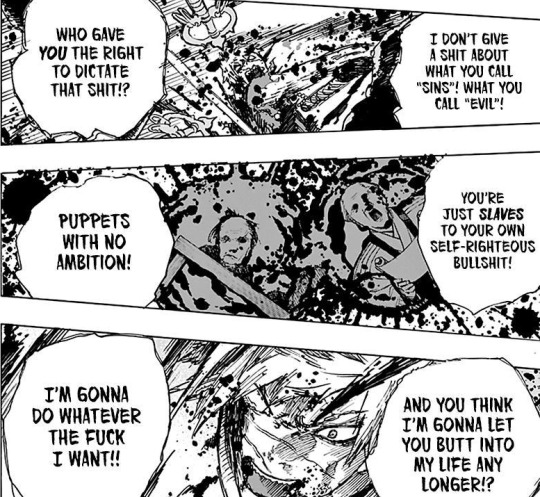
This case also became their 'villain origin' story. Their entire motivation to become criminal (other than survival) is result of being traumatized by this event. It is very interesting to explore their reaction to this during the story.

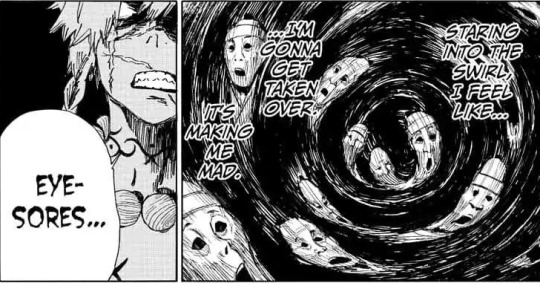
They dont believe in justice and anything represent it. They dont care about honor or honesty anymore. They are literally bandits, opposite of samurais, they lie, they steal. Its almost like reflection of their hatred towards society and especially samurais or blowbacks of samurais' obeying orders without a question.

They dont believe in justice. Toma seems to be the silent type who accepts his fate when is in terrible sitution. Meanwhile, Chobe lash out and he is triggered whenever someone talk about 'punishment' or whenever he is reminded of 'samurais' to the point he accidently hurts his brothers. He said he hates people who blindly follow things without a question and he is his own god.
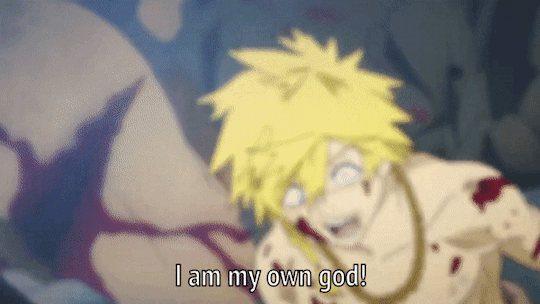
Freedom, making own decisions is very important concept to Chobei and i think it is something samurais (and even asaemons in story) lacks.
They care about things like honor and rules too much to the point they act injustice. Even someone kind person as Shion was about to kill Nuruga despite the fact that she is innocent, just because rules said otherwise. And Sagiri as someone who doubts, she is rising as heroine and she is connecting criminals and asaemons together.
The point is; Story is criticizing samurais obsession with certain rules to the point they act insane while it explore humanity of criminals and most of them are just victims who try to survive.

Chobei and Toma also seems to hate 'people gathering together'. Those two just stick together and there is always distance between them and other people.
Chobei says just two of them is enough and Toma literally says he hates group thing, while he is remembering his father gathering together with other samurais.

They love their father but they clearly traumatized by what happenned. They both see their father's death as abandonment. Their father chose his honor, his revenge, his samurai friends, 'justice' above his kids and his wife. And as response to that, Aza brothers decide to chose each others over everyone, every friends they could make, every revenge plot or even justice. Because Chobei and Toma, their father abandonded them. We can see in their narrative, that Chobei says 'I know Toma, i am not like our father. I will come back to you.' and when Chobei 'died' at the end, Toma says 'whats your difference than our father then'. Its like a code between them. They see any kind of separation as abandonment. Worst part of all of these is that they know that their father loves them but because of that happenned, they have serious abandonment issues.
Basically, every part of their character is connected to this event. Samurais world was so insane and unfair that kids of samurais became bandits result of it.

On the other hand, there is this Shugen who symbolizes everything wrong with samurais world. He is so obsessed with punishment, justice, honor, that he killed innocent family (including babies) to punish the criminals, he also killed his asaemon friend Fuchi.
This obsession with honor and justice can be said for other asaemons, samurais but Shugen is the most extreme one with his ways so yeah.
Apperantly, Shugen is reference Momotaro, popular hero of Japanese folklore. Author mentions this in his interview.

Momotarō was born from a giant peach, which was found floating down a river by an old, childless woman who was washing clothes there. The woman and her husband discovered the child when they tried to open the peach to eat it. The child explained that he had been bestowed by the gods to be their son. The couple named him Momotarō, from momo (peach) and tarō (eldest son in the family). When he was just five years old, he was able to cut a big tree with just an old knife. When he matured into adolescence, Momotarō left his parents to fight a band of Oni (demons or ogres) who marauded over their land, by seeking them out in the distant island where they dwelled (a place called Onigashima or "Demon Island"). En route, Momotarō met and befriended a talking dog, monkey and pheasant, who agreed to help him in his quest in exchange for a portion of his rations (kibi dango or "millet dumplings"). At the island, Momotarō and his animal friends penetrated the demons' fort and beat the band of demons into surrendering. Momotarō and his new friends returned home with the demons' plundered treasure and the demon chief as a captive. (Source.)
Shugen's story is also similar to this kid. His family was murdered and later, he became asaemon, proves his talents with blade. He is even given present by Shogun and he kills/punishes anyone who disobey the laws. This is shown in Jigokuraku novel too.
This is interesting because Momotaro is just a hero but Shugen is clearly written to be twisted and dark version of it. He is someone never doubts or questions his beliefs, the darkest side of asaemons. Because even just simple well intention might end up with something bad if you never think you might be the wrong one. Or if you dont have mercy or empathy. Shugen is also a tragic character who hates criminals because they killed his parents and eventually molded by samurais, this lead him to be righteous and obsessive and he also chose to not change despite tha fact that he made friends.
As bonus; Momotaro also kills demons/bandits and Aza brothers are kinda similar to Blue Demon and Red Demon, as two demons who was treated unfairly by normal people. More details in here.

So this is the connection i think they have. Its not the parallels. Its the story of samurais. And there is always a two sides to same story. Aza brothers who are criminals eventually turn out to be tragic villains, they become allies to their enemies because they change for better while characters like Shugen who is someone supposed to be hero eventually become enemy to his allies because he remains the same.
Story also explores the ideas of invidual vs greater good with their story. One would destroy the world to protect his brother, ıother one would kill his friend with the name of justice. Both ways are extreme but Chobei's (and Toma's) main motivation is love for one person and since his conection is real, a person, he can rise but in Shugen's case, his motivation is ideals, for bunch of invisible people that he has no connection with, instead of focusing people near him, he chose to ignore it for the sake of ideals, thats why he falls. Its interesting.
I wish we explore this side of story in more details, its very interesting, and deep, and fun.
#anon ask#jigokuraku#jigokuraku analysis#jigokuraku meta#aza chobei#aza chobe#aza toma#hells paradise#yamada asaemon shugen#jigokuraku parallels#yamada asaemon sagiri#gabimaru#sagiri#47 ronin#momotaros#samurai#tw trauma#aza brothers#hell's paradise
21 notes
·
View notes
Text





47 samurai 四十七士, shijūshichishi
also known as Akō incident (赤穂事件, Akō jiken)
A historical event in which 47 rōnin avenged the loss of their master on January 31, 1703, fully aware of their consecutive death. A legendary moral example of integrity and respect to the samurai principles.
Asano Naganori lord of Akō (now in Hyōgo prefecture) was invited to Edo (now Tokyo) as the 4th member of the official reception group for imperial envoys arriving from Kyōto, during shogun Tokugawa Tsunayoshi's rule. Kira Yoshinaka, retainer of the shogun, had the duty to inform them about the court etiquette.
Kira, annoyed by lord Asano's lack of manners (he didn't offer Kira some informal but hefty bribe/prasent), became insultingly rude. Asano lost his temper, drew his sword and inflicted Kira a minor facial wound, but a sword drawn inside the shogunate was a grave breach of protocol and Asano had to commit ritual suicide at once.
The forty-seven samurai of Asano's bodyguard, reduced to ronin, decided that their code of honour demanded revenge. Taking to ostentatious idleness and dissipation to put both Kira and the authorities off guard, they waited for almost two years. While the oldest, who was in his eighties, was excluded from the attack as witness and messenger of the events, on the night of January 30, 1703, they attacked Kira’s mansion, killed several of Kira's samurai, found him scared shirtless hiding in a closet and decapitated him.
The avengers washed and carried the head to Sengakuji Temple and put it on their lord's grave.
To this day, the story remains popular in Japan, and each year on 14 December, the temple where Asano Naganori and the rōnin are buried, holds a commemorative festival.
Fictionalised accounts of the tale of the forty-seven rōnin are known as Chūshingura. The story was popularised in numerous plays, including in the genres of bunraku and kabuki. Because of the censorship laws of the shogunate in the Genrokuera, which forbade portrayal of current events, the names were changed. The first Chūshingura was written some 50 years after the event.
Utagawa Yoshitora: 47 (45) Ronin Portraits, ca 1840. Ukiyo-e
https://www.britannica.com/event/47-ronin
https://en.wikipedia.org/wiki/Forty-seven_r%C5%8Dnin
https://www.historytoday.com/archive/months-past/forty-seven-ronin-incident
6 notes
·
View notes
Photo

🗓️ December 14 🤔 Thought of the Day &🕺 Observances: 🗣️ Alabama Day (Alabama) 🗣️ Forty-seven Ronin Remembrance Day (Sengaku-ji, Tokyo) 四十七士 Shi-jū-shichi-shi, forty-seven samurai), also known as the Akō incident (赤穂事件 🗣️ Martyred Intellectuals Day শহীদ বুদ্ধিজীবি দিবস Bangladesh বাংলাদেশ শহীদ 🌍 International Monkey Day World Monkey Day Cercopithecidae Spider Monkey Squirrel Monkey Vervet Monkey Proboscis Monkey Pygmy Marmoset Rhesus Macaque Common Marmoset #December14 #ThoughtoftheDay #TodayObservances #AlabamaDay #Alabama #FortysevenRoninRemembranceDay #47ロニン記念日 #ロニン記念日 #Sengakuji #センガクジ #Tokyo #東京 #四十七士 #Shijūshichishi #赤穂事件 #日本 #MartyredIntellectualsDay #শহীদবুদ্ধিজীবিদিবস #Bangladesh #বাংলাদেশ #শহীদ #InternationalMonkeyDay #MonkeyDay #Monkey #WorldMonkeyDay #Cercopithecidae #SpiderMonkey #SquirrelMonkey #VervetMonkey #ProboscisMonkey
0 notes